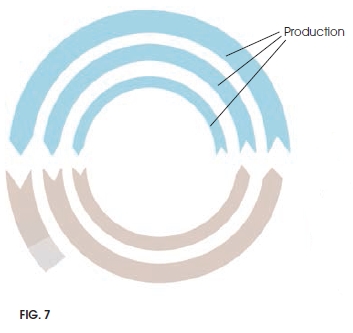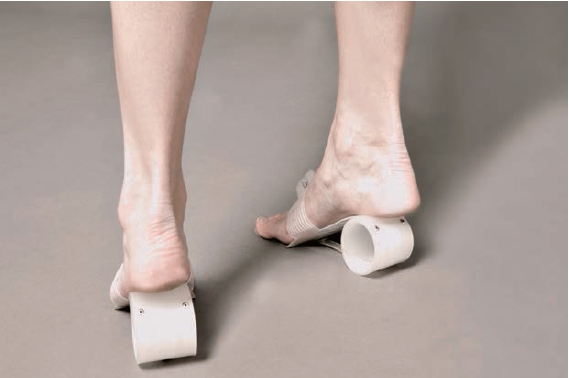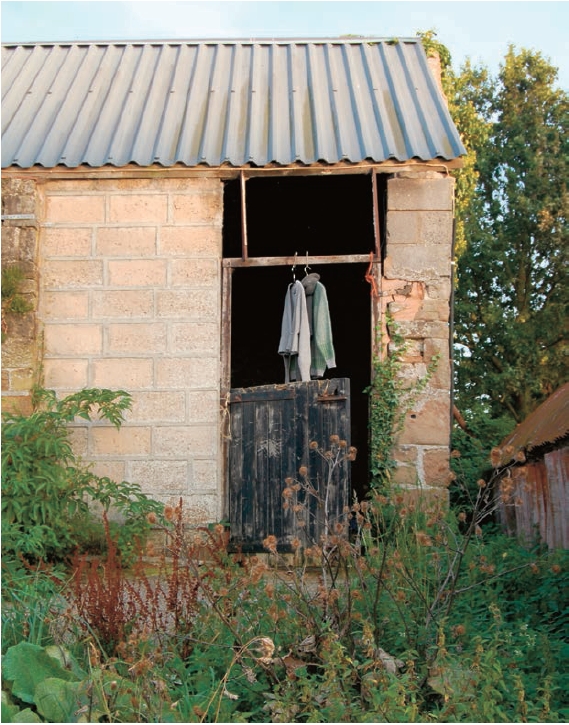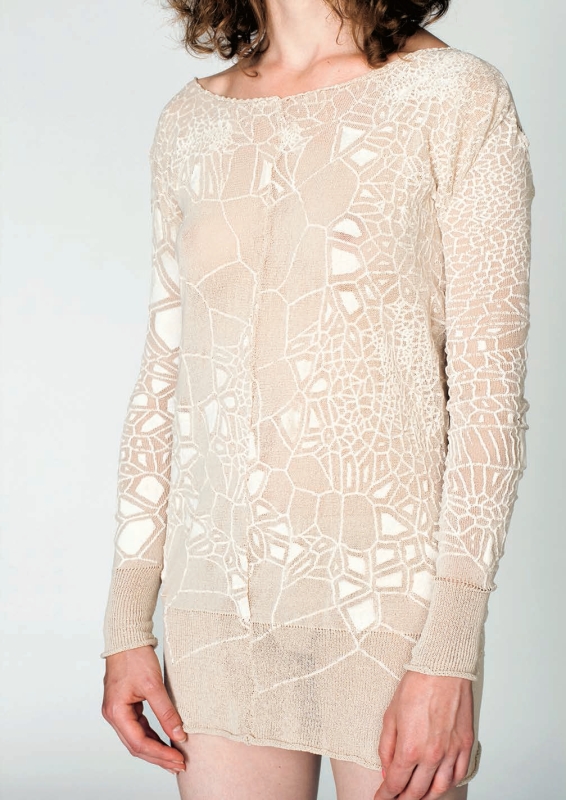Chapter 12: Speed
All activities have a tempo or speed to them. Some are fast and some are slow. Today’s dominant mass-market fashion business model of producing and selling cheap, homogenized clothing items in ever-increasing quantities is based on fast speed. But doing everything fast – increasing the number of stock drops into store each season, cutting lead times to supplier factories, decreasing the time to market of a design, transporting stock by road or air rather than sea – is not an inevitable feature of fashion production and consumption. Rather, it is the prevailing market and economic system, the goal of which is to grow in scale continually. Increasing the speed of operations is just one mechanism by which growth is achieved. This driving force exerts pressure on every part of the textile supply chain, drawing each into a tightening spiral of increasingly low prices and creating a negative dynamic, pitching one against another to compete for business: farmer against farmer, mill against mill, retailer against retailer. This ‘competitive economics’, as Wendell Berry names it,46 also fuels adoption of technologies and practices that push both people and natural resources beyond tolerable thresholds.
Increasing the tempo of fashion activity grows the volume of garments produced and consumed, for converting a design to market faster enables a company to steal a march on its competitors and provides more opportunities to sell. Similarly, increasing the frequency with which sales stock is refreshed in store (for example, by introducing several mini-collections in each season) exploits the consumer desire for novelty and triggers a rise in sales. While the desired economic effect of increasing speed is to grow the fashion business, the inescapable resource effect is an increase in the demand for natural materials and labour, dictated by an ever-greater throughput of physical products. The impact of this dynamic on ecosystems and workers is at the crux of the sustainability challenge for fashion.
To date, those fashion companies that have chosen to deal with the sustainability impacts of production have mostly focused on increasing resource efficiency (doing more with less) and rolling out good labour practices across an ever-larger workforce as a way to mitigate the ill effects of increasingly faster business practices. Positive as these strategies may be, they are limited by the scale of efficiency gains that are actually possible and the effectiveness with which good labour practices can be introduced en masse. Against a backdrop of continual economic growth, the mechanisms that ensure sustainability gains must also increase in potency indefinitely.
Raising questions about speed means raising questions about economics
However, the tempo of the fashion sector is not fixed. There are many speeds of fashion activity with ‘better’ resource profiles that are also possible. Yet to invoke them means that the underlying models of the fashion industry need to change; in raising questions about speed we must also raise questions about economics, for they are two sides of the same coin. There is, of course, great resistance to changing existing ways of doing things, not least because today’s practices often limit what we imagine might be possible tomorrow. Just as the gauge of train tracks limits ideas about the sorts of train that can run on them, existing economic models lock us in to particular ideas about the way the fashion business can operate. It is the infrastructure itself that has to be rethought.
Steady-state economics
More than 30 years ago, economist and author Herman Daly proposed a non-material-growth-based economic model, which he termed ‘steady-state economics’.47 Here the economic priority is to maintain stocks of resources at a steady level (determined by the ability of the ecosystem to regenerate materials and process wastes) rather than to expand continually regardless of ecosystem capabilities (see figs. 7 and 8). Inevitably this model connotes activity that approaches speed in a profoundly different manner than that seen in today’s fashion sector, but what is critical to note is that this shift is not at the cost of development, for the economy will still be free to grow – not in physical, quantitative terms, but in qualitative terms. This shift in goals has the potential to transform the sustainability profile of the fashion sector at root and opens up a plethora of possibilities. In this new economic model, tempo or speed is not locked into the maximal resource-use ‘fast’ position (nor slow, for that matter), but is flexible to adapt to a variety of speeds called upon as necessary by different needs and contexts. This presents a fundamentally different starting point for change.

Fig. 7 – Ever-growing cycles of production and consumption (Daly, 1992). Such a view can encourage an economy that can ultimately strain the environment.

Fig. 8 – Steady-state economics considers cycles of production and consumption that take the surrounding ecosystem into account and try to achieve equilibrium with it (Daly, 1992).
Fast
Fast speed in fashion has become synonymous with a particular type of fashion product and retail environment. This has been made possible by consumers’ seemingly insatiable appetite for material consumption and by technological advances that eat into some of the time delays that were once seen as an inevitable part of the clothing supply chain. Tracking sales with electronic tills and linking this data to supplier factories with flexible production schedules has now made it possible to restock a rail with a popular item as demand requires; and computer-aided design interfaced with just-in-time manufacturing methods has enabled a design sketch to be turned into a finished product in as little as three weeks. Doing things quickly implies that we can do more things. It also generates more impact. In fashion, as in other sectors, the cost implications of the growth model are mainly felt outside the corporation enjoying the benefits: by society at large, by workers and by the environment. Costs are experienced as increased pollution, resource depletion and climate change. They are reflected in clothing workers’ ‘poverty’ wages, temporary employment contracts and unpaid overtime, as their employers are squeezed on price and order times (cut by 30 per cent in the past five years)48 by large retailers and global brands wielding their economic power and economies of scale. They are felt as lack of choice and variety of garments on the high street as low-cost ‘big-box’ retailers create a dynamic that prioritizes cheapness, mass availability and volume purchasing above all else, forcing smaller producers, who cannot compete on price alone, out of business. And they are felt in the fields and ranches where fibre is produced, where land becomes degraded – salinated from the overuse of synthetic fertilizers or compacted from overgrazing – and where family farmers who cannot compete on price alone are forced off the land.
Fast speed in fashion framed more deeply
A great number of newspaper column inches has been devoted to fast fashion in recent years. But rarely do these columns frame impacts within a broad and deep picture. Certainly, they portray the effects of fast fashion as undesirable, but they also tend to couch solutions as extensions and/or modifications to the status quo, and suggest, for example, that provided one fibre is replaced by a lower-impact alternative, volumes can keep increasing and current economic preferences can remain in place. While switching fibres to organic may bring immediate benefits to, say, farmers, thereby helping to alleviate some of fast fashion’s negative effects in one part of the supply chain, it fails to deal with the long-term or cumulative consequences of fast fashion across social and ecological systems as a whole. For these negative effects are endemic to the sector’s underlying economic model. The better the fashion sector performs, the worse these effects will get. They are a symptom not of its failure, but of its success. Thus to talk about the sustainability effects of fast fashion without also critiquing business practices is to deal with it superficially or effectively not at all. By the same token, to discuss fast fashion’s apparent antidote, slow fashion, without also framing it against a changed (sustainability-supporting) set of economic priorities and business practices, also fails to understand the nature of slow at its deeper cultural level.
Fast and slow are complementary
One of the most formative sources of inspiration for this restructuring is the natural world and its systems and processes. Speed, including fast speed, is a key feature of natural systems. A human body may end its physical cycle at 86 years, for example, but breath is cycled every few seconds. Understanding the context of speed, its mechanisms and appropriateness, offers an alternative lens through which we can explore alternative practices in fashion. The emphasis in nature on both balance and fast speeds in initial phases of development contrasts sharply with the reality of the growth model for fashion, which sees fast speed as a permanent business model option. Perhaps the most important trait of fast speed in nature is that it is used to further the goal of the entire system, not as an end or goal in itself. Here fast is combined with slow to foster short-term vitality and long-term stability. Slow regulating systems have fast-moving parts within them. Reflecting the subtleties of designing for a nature-inspired balance of speeds and rhythms of use, One Night Stands are fully recyclable shoes intended for a single use. Made from a single piece of recyclable polypropylene secured with a reusable screw and six aluminium rivets, the shoes can be flat-packed and easily assembled, thus minimizing packaging and shipping and ensuring a competitive price point. They are designed to be recycled by existing facilities and, although they are ‘fast’ in terms of their use, they depend entirely on a ‘slow’ system of reclamation being in place.

Stephanie Sandstrom’s polypropylene shoes, One Night Stands, are designed to be quickly assembled and fully recyclable.
Slow
In the food sector, homogenous, ‘quantity’ eating – epitomized by the fast-food chain McDonald’s – has come to be recognized as an indicator that certain economic priorities are impoverishing society rather than making it richer. Likewise in the fashion industry, low-cost, homogenous, ‘quantity’ dressing that has seen the UK’s budget clothing market grow by 45 per cent in five years (twice the rate of the rest of the clothing market),49 has also raised questions about social and environmental ‘richness’.50 Low price has ushered in a change in purchasing and wearing habits. Garments are often bought in multiples and discarded quickly since they have little perceived value. Fabric quality is poor and garment construction often fails to withstand laundering, thereby encouraging replacement. Unlimited wants, given succour by rapidly changing trends, are treated with unlimited production. Against this backdrop of growth-obsessed activity, a movement promoting slow culture and values in fashion has emerged, heavily inspired by the Slow Food movement. Slow Food was founded by Carlo Petrini in Italy in 1986 and links the pleasure of food with the awareness and responsible nature of its production. It seeks to preserve cultural and regional culinary traditions and agricultural diversity, by opposing the standardization of varieties and taste, and championing the need for consumer information. Though the Slow Food movement started as a reaction to fast-food culture, it has quickly become something much more than merely its opposite. Similarly, the slow movement in fashion is more than just fast fashion minus the bad bits. ‘Slow’ is not a simple descriptor of speed. Rather it represents a different world view that names a coherent set of fashion activity to promote the pleasure of variety, the multiplicity and the cultural significance of fashion within biophysical limits. Slow fashion requires a changed infrastructure and a reduced throughput of goods. Categorically, slow fashion is not about business as usual and simply designing classics and planning long lead times. Slow culture is not about ‘telling Primark to put its prices up’ nor about ‘stipulating annual collections’. Slow fashion represents a blatant discontinuity with the practices of today’s sector; a break from the values and goals of fast (growth-based) fashion. It is a vision of the fashion sector built from a fundamentally different starting point.
The values and relationships of slow fashion
The slow-fashion vocabulary of small-scale production, traditional craft techniques, local materials and local markets offers one set of responses to these questions (see fig. 9). It challenges growth fashion’s obsession with mass-production and globalized style and becomes a guardian of diversity. It questions growth fashion’s emphasis on image and ‘the new’ over making and maintaining actual material garments.51 It changes the power relations between fashion creators and consumers and forges new relationships and trust that are only possible at smaller scales. It fosters a heightened state of awareness of the design process and its impacts on resource flows, workers, communities and ecosystems. It prices garments to reflect true costs. It promotes the democratization of fashion, not by offering people ‘more cheap clothes that mainly look the same’,52 but by offering them more control over institutions and technologies that impact their lives.

FIG. 9 SUMMARY OF DIFFERENT APPROACHES TO FAST AND SLOW
One company that uses speed in a variety of ways to build a business model fundamentally different from the growth fashion industry is the Internet company Betabrand. Epitomizing the ‘Long Tail’ approach to business53 – that is, a shift from a focus on a relatively small number of mainstream products and markets towards a huge number of niches – Betabrand sells only online, thereby limiting its overhead fixed expenses. It launches a new product every week, a far faster rate than any traditional ‘fast fashion’ company, but – and this is a critical point – only one product and not a collection. Meeting minimum orders of 100 pieces, the company breaks even at 25 pieces sold, and when all 100 are purchased, the style is discontinued. Fast is apparent at the market end, where a new product is introduced online every Tuesday at noon, and in style development, which is pinpointed through ‘crowdsourcing’ and rapid response to customer desires. But the volume and flow of materials into the fashion system is nonetheless slowed, by the self-imposed limit on production. As a bonus, the limited runs make the products valued, coveted and emotionally durable. Betabrand has become a San Francisco counter-culture icon.
Another company that uses speed to shape its business model is UK company Keep and Share. Its design philosophy is to create quality pieces that combine the familiar and the unconventional, which gives it a springboard from which to work with customers to persuade them to buy fewer, more special pieces and to keep their items in use for longer. This principle evokes a sense of slowness, with its emphasis on relationships between friends who share the garments, and an intimate knowledge of what fits different people and why.

Keep and Share’s knitted garments are created to last.

A knitted garment by Marie Ilse Bourlanges that uses slowness to inform the design process.
Marie Ilse Bourlanges’ project Decay provides an example of slowness as a process of designing. Eight knitted garments capture traces of past behaviour, their surface pattern conveying the findings of deep research into the natural motions of the body. An outer carbon-paper suit works as a registration device, to trace use and body movements (such as pressing, bending, rubbing, scratching and stretching) on to an inner white blouse. The transferred imprint on the blouse is then translated into a pattern, resulting in intricate collections of lines that ebb across the garment surface. The final pieces, even though they are newly made, articulate the expressions of a body over time through changes to a garment’s surface, so revealing some of the most intimate and ephemeral movements of daily life.
